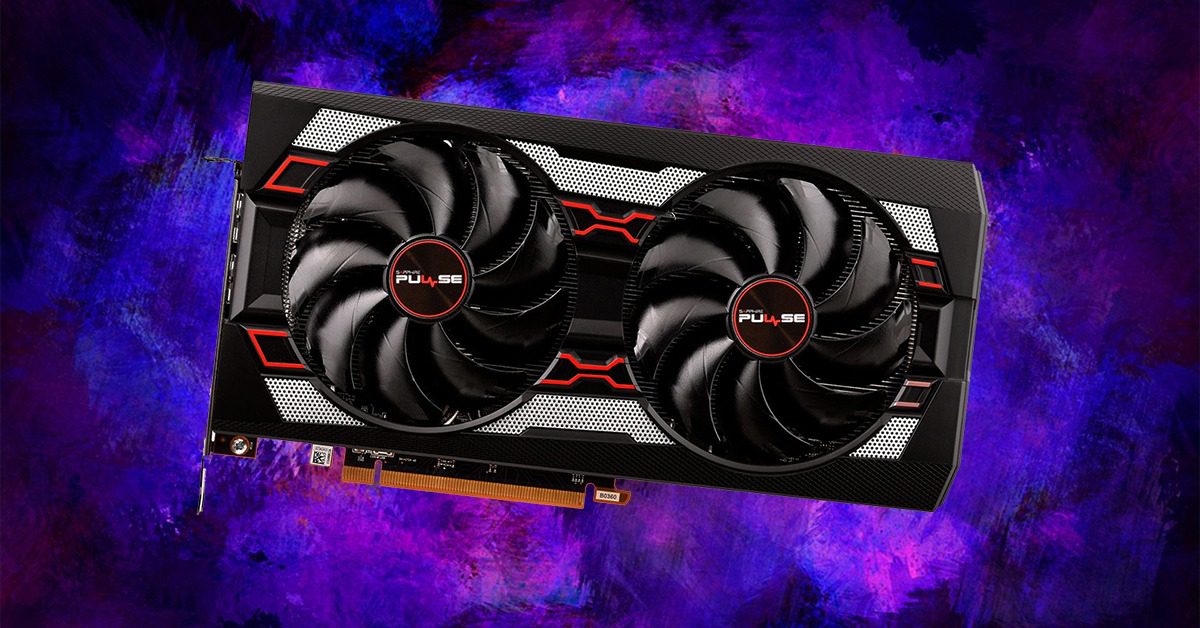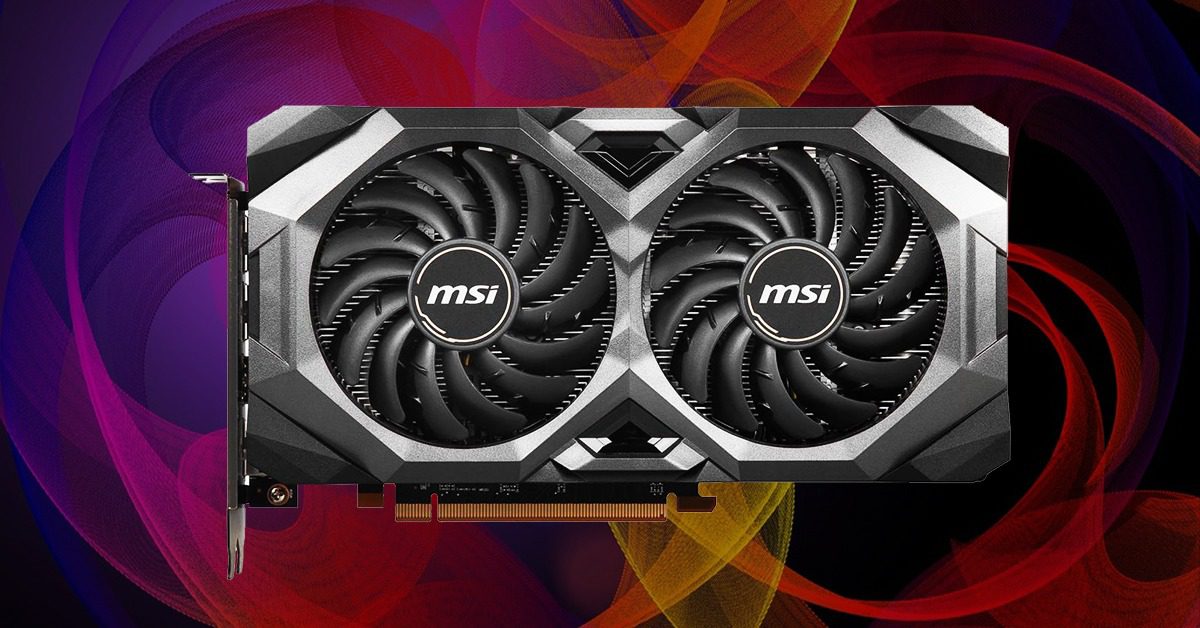We recently started carrying AMD’s new RX 5700 XT graphics cards and they’ve proven to be extremely popular among the Cutting Edge Gamer community. There are several different versions of the RX 5700 XT, and in this post we will explore the similarities and differences between them in an effort to help those of you readers who are trying to decide which of the RX 5700 XT cards is the right fit for you to lease or purchase.
XFX RX 5700 XT THICC II

The most recent addition to our graphics card inventory, the XFX RX 5700 XT THICC II, has earned its place in our GPU lineup. The THICC II boasts a sleek black finish and a dual fan configuration built upon XFX’s acclaimed Ghost Thermal 2.0 design. This design utilizes a 90% larger heat-sink which reduces noise by 35% (fans utilize idle-stop functionality, meaning fans won’t start spinning until the GPU is placed under a heavy load) while also keeping temperature yields low. AMD’s RX 5700 XT GPUs support the PCIe 4.0 interface, and the THICC II follows suit (note that PCIe 4.0 is currently only compatible with a Ryzen 3000 CPU and x570 motherboard). The THICC II utilizes the RDNA architecture that powers AMD’s 7nm GPUs delivering 1.25 performance per clock. The GPU also has 8GB of GDDR6 memory which allows for fast speeds and exceptional 1440p performance.
Performance-wise, the THICC II exceeds its NVIDIA counterpart (the RTX 2060 SUPER) in every way. In fact, the THICC II reaches frame rates that are close to even the RTX 2070 SUPER. The THICC II has a base clock of 1605 MHz and a boost clock of 1905 MHz. Currently, the XFX RX 5700 XT THICC II is available on our website for $50.99/month under our lease-to-own program, and also retails in most places for around $440.
The SAPPHIRE RX 5700 XT PULSE & the SAPPHIRE RX 5700 XT NITRO+
The SAPPHIRE RX 5700 XT PULSE and the SAPPHIRE RX 5700 XT NITRO+ serve as our first batch of RX 5700 XT GPUs made by SAPPHIRE. Both video cards provide great PC gaming performance at a low cost with each having distinct features that set them apart.
SAPPHIRE RX 5700 XT PULSE

The SAPPHIRE RX 5700 XT PULSE comes in a black/red/white color scheme which has a very different look from past SAPPHIRE cards. Like the XFX RX 5700 XT THICC II, the PULSE utilizes a 2-fan design. SAPPHIRE’s Dual-X cooling technology keeps the GPU, memory, and VRM components cool under heavy loads while keeping noise levels low. The PULSE features the new PCIe 4.0 interface and has 8GB of GDDR6 memory. Both the base clock (1670 MHz) and boost clock (1925 MHz) are faster for the PULSE when compared to the THICC II. The PULSE is available for lease on our website for $50.99/month and retails for $420-$430.
SAPPHIRE RX 5700 XT NITRO+

The SAPPHIRE RX 5700 XT NITRO+, the first 3-fan RX 5700 XT graphics card that we’ve carried thus far, is quite different from its other 5700 XT peers. The NITRO+ boasts all of the same game-changing features that the aforementioned RX 5700 XT cards have: PCIe 4.0, 7nm manufacturing process, and AMD’s RDNA architecture, but that’s where the similarities end. The NITRO+ has a much higher base clock (1770 MHz) than the THICC II and the PULSE, and its boost clock can reach up to 2010 MHz! To put that into perspective, most of NVIDIA’s 2080 SUPER cards have boost clock speeds that top out around 1900 MHz. The NITRO+’s lightning clock speed is possible thanks to SAPPHIRE’s Trixx Boost software. By slightly lowering resolution, Trixx Boost bumps up SAPPHIRE’s already impressive overclock speeds to unprecedented levels never before seen from AMD cards. That takes us to the best part about the NITRO+, the price. Gamers can get their hands on a NITRO+ for ~$460 or lease one from us for $53.99/month! In my opinion, the SAPPHIRE RX 5700 XT NITRO+ is the best 5700 XT video card, and one of the best GPUs in general, that money can buy.
MSI RX 5700 XT MECH OC

The first batch of MSI RX 5700 XT cards that we’ve made available are the MSI RX 5700 XT EVOKE OC & the MSI RX 5700 XT MECH OC. Both of the cards have a dual fan design with two distinct aesthetics. The MECH features the TORX Fan 3.0 design which has reduced GPU temperatures by 11%. The MECH has a base clock of 1670 MHz and a boost clock of 1925 MHz. This places the card on par with with the SAPPHIRE RX 5700 XT PULSE performance-wise. Like the other 5700 XT cards, the MECH is built upon AMD’s new RDNA architecture. The MECH retails for ~$420, and you can lease one from us for $50.99/month.
The MSI RX 5700 XT EVOKE OC is similar in performance to the MECH, but different in design. The card boasts a beautiful champagne gold trim with a carved grill to improve dissipation. ZeroFrozr technology keeps the fan noise down under low loads, and TORX fan 3.0 keeps the GPU temperatures down. The EVOKE has slightly higher clock speeds compared to the MECH with a base clock of 1690 MHZ and a boost clock of 1945 MHz. The EVOKE is slightly more expensive than the MECH, retailing for ~$430, and you can lease on from us for $51.99/month. Choosing between these cards is more about personal aesthetic preference, and both cards will provide smooth 1440p gaming performance.
MSI RX 5700 XT EVOKE OC

Conclusion
AMD really hit it out of the park with the RX 5700 XT cards, and gamers are praising them more than any other GPU in recent memory. Whether you decide to go with the THICC II, PULSE, NITRO+, MECH or EVOKE, the RX 5700 XT will certainly elevate your PC gaming experience. If you’re interested in getting your hands on one of these cards, check out or graphics cards leasing program!



Recent Comments